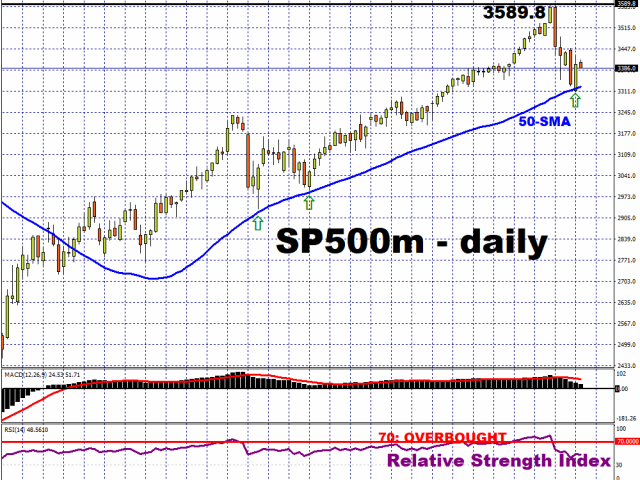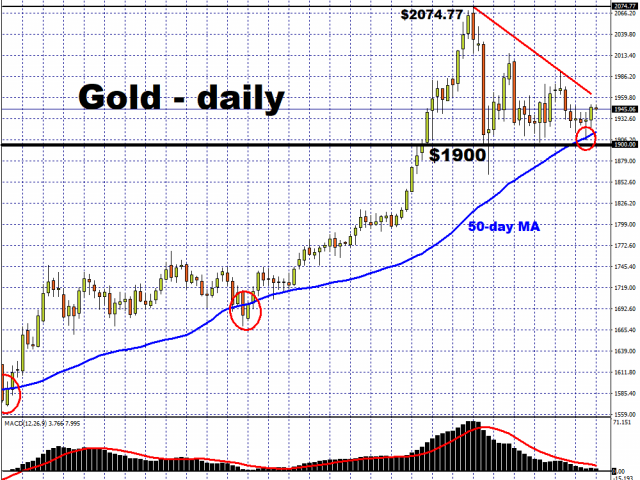The 50-day simple moving average has once again demonstrated its dependability as a key support or resistance level. This technical indicator calculates the closing price over the past 50 days and averages it out, so as to give the investor a better idea about the asset’s recent trend.
This week, it played its role as a support level, and it was evident in multiple assets.
In recent days, the Nasdaq posted its fastest-ever correction from a record high, falling by just over 10 percent within three trading days. The index dipped below its 50-day simple moving average (SMA), only to rebound and register its best day since April. Market participants saw the selloff as an opportunity to “buy the dip””, and were unfazed by the recent rout that wiped out US$ 2 trillion from stock markets.

The same pattern was also evident in the S&P 500, as it bounced off its 50-day SMA before advancing two percent, which was the benchmark’s biggest single-day advance since June 5th. This technical indicator has proven to be a reliable support level, showing its worth two other times since the index broke back above the 50-SMA in April.

And this trend wasn’t just confined to riskier assets this week.
Even Gold exhibited the same pattern on Tuesday, with Bullion bulls drawing comfort from the fact that, since end-March, forays below its 50-day SMA have been short-lived. The precious metal is now on course to register its 8th consecutive quarter of gains. If Gold can post 5 more quarterly gains in a row, it would beat the run of 12 that was set between 2008 and 2011.

Gold has been able to take advantage of the weaker Dollar overnight, along with its traditional role as a hedge against inflation, considering that real yields on 10-year US Treasures remain mired in negative territory close to minus one percent. Still, Gold and the Dollar index (DXY) may see near-term gyrations, pending the US inflation data due Friday.
Other key events that could move markets before the trading week is over include the European Central Bank policy decision and the US weekly jobless claims, both due today. Ongoing Brexit negotiations, as well as discussions over the next round of US fiscal stimulus could also sway global sentiment.
Amid such uncertain times, investors can perhaps draw comfort from the notion that some things can still be relied on.
Disclaimer: The content in this article comprises personal opinions and should not be construed as containing personal and/or other investment advice and/or an offer of and/or solicitation for any transactions in financial instruments and/or a guarantee and/or prediction of future performance. ForexTime (FXTM), its affiliates, agents, directors, officers or employees do not guarantee the accuracy, validity, timeliness or completeness, of any information or data made available and assume no liability as to any loss arising from any investment based on the same.


